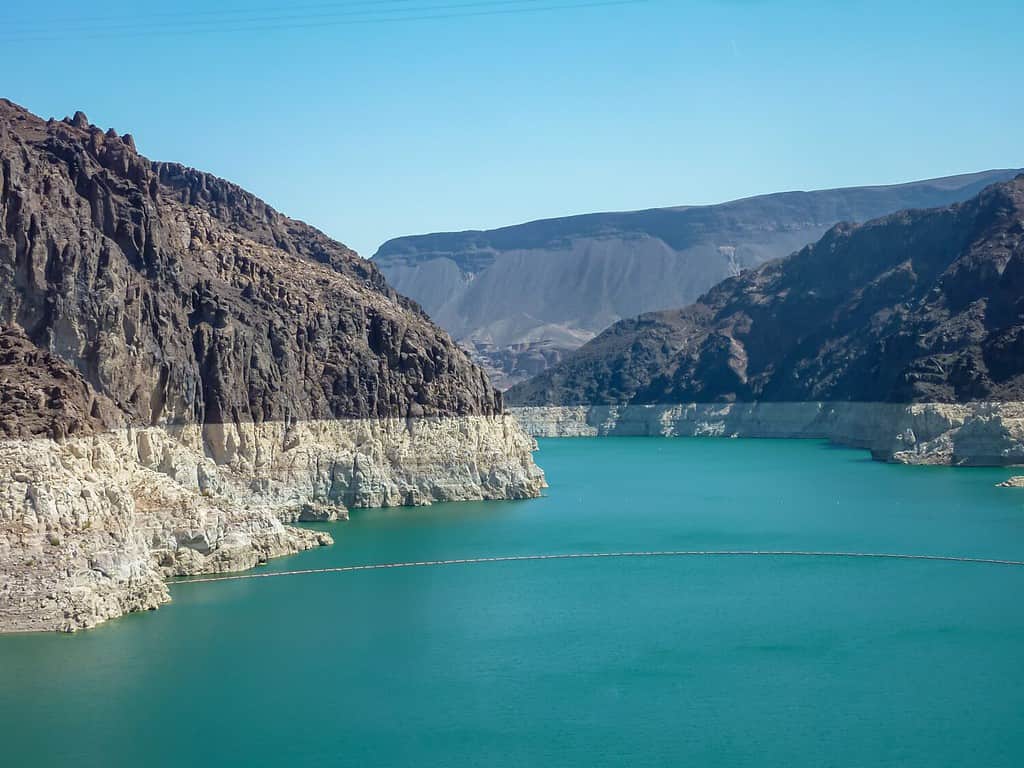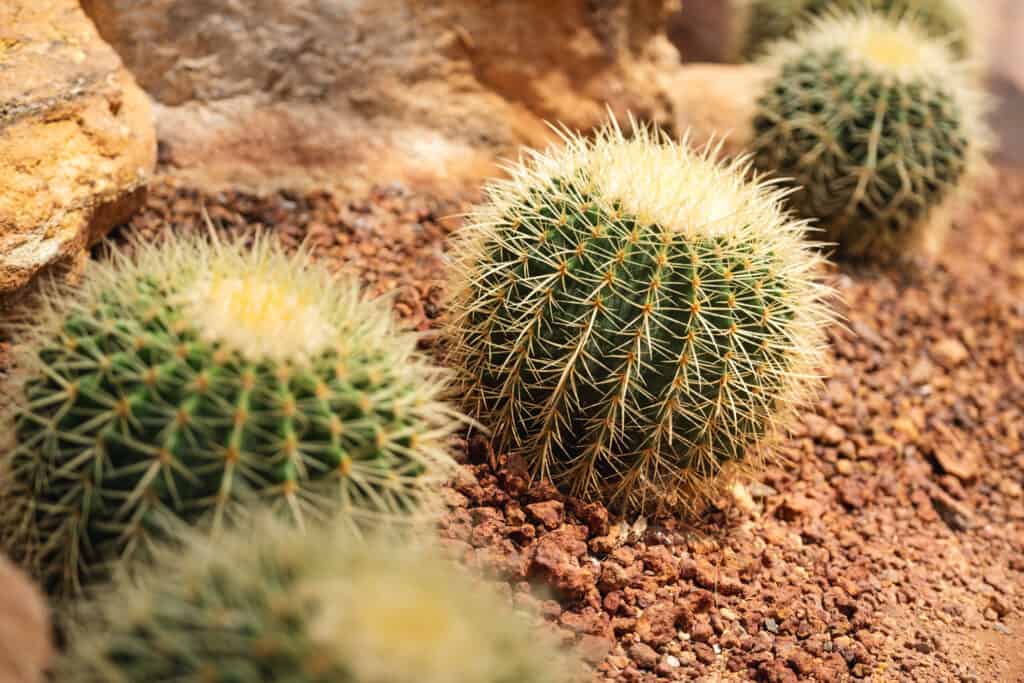The state of Nevada has over one hundred ninety-three lakes. Yet there’s one lake that stands out from the rest of them. Lake Mead is the oldest man-made lake in Nevada. The Hoover Dam created the lake. Today, the lake is a reservoir with a maximum depth of 532 feet and a maximum elevation of 1,230 feet. Many people visit Lake Mead today as it’s a popular swimming site and a massive body of water for boating. The lake is a great hiking, camping, and waterskiing location. Boulder Beach on the western shore of Lake Mead is a popular camping destination. Today, the lake represents an important water resource for Arizona, California, and Nevada residents.

How Old Is Lake Mead?
Lake Mead is almost one hundred years old. The lake opened in 1936. However, the process of Lake Mead’s creation is even older. The oldest man-made lake in Nevada’s history is tied to the creation of the Hoover Dam. Prior to the construction of the dam, the surrounding states had a disagreement on the water distribution of the Colorado River basin. The Colorado River Commission met up in Santa Fe in 1922 to sign the Colorado River Compact. It split the river basin into upper and lower halves with the states and each state’s respective regions deciding on how to allocate the halves.

The Hoover Dam looking towards Lake Mead from the Mike O’Callaghan–Pat Tillman Memorial Bridge, Nevada Arizona state line, USA. Blue turquoise water surrounded by lush dry mountain ranges.
©Christopher Moswitzer/Shutterstock.com
Eventually, it pushed the initiative to create the dam. Initial plans were rejected for six years. The bill passed in December 1928. President Herbert Hoover signed off on the dam in 1929 and construction went underway in 1930. The Hoover Dam is 726 feet tall and 1,244 feet long. It contains more than 4.4 million cubic yards of concrete. The Hoover Dam construction also required the diversion of the Colorado River. That was accomplished through a tunnel network and cofferdams.
Where is Lake Mead Located on a Map?
In fact, the Hoover Dam created Lake Mead, a reservoir on the Colorado River in the Southwest of the US. It lies in Nevada and Arizona, 24 miles east of Las Vegas.
Here it is on a map:
Lake Mead’s Dark History
In this decade, Lake Mead’s water levels lowered by 170 feet. Archaeologists dug up some unique artifacts and shocking findings within the past year. Some of their findings are unique artifacts, towns once underwater, and bodies.
People can see signs placed by the National Park Service along the shoreline that show the water levels from previous years. Some of the signs show what the water level was like in 2002, 2008, and 2021. Way before Lake Mead became a body of water, it was just another piece of land. At least eighteen tribes used to live in the land surface area that the lake takes up today. Many people had to suddenly evacuate from their towns as the lake began to fill up during the thirties.
Submerged Towns
Saint Thomas was one of those towns submerged by the lake. In 2002, the town resurfaced. Archaeologists found foundations of houses and businesses along with tree stumps in place of the main streets. All of the items found in the lake are federal property. The head of the archeological department Chris Nycz discussed the findings in a Fox interview. He stated that “probably less than five percent of the park has been surveyed for cultural resources. With over a million acres that we have, there are thousands of sites that we know about both on dry land and submerged… There’s probably a lot of sites that we don’t know about as well that are going to come out of the water as the water levels recede.”
Bodies In The Water?
Now to some unfortunate news. Bodies were found in the lake. In that same Fox interview, retired police officer David Kohlmeier was interested in a specific case where a body was found inside of a barrel. The clothing on the body traced back to the 1970s and 1980s because of the clothing brands the body had on. Kohlmeier turned his podcast “The Problem Solver” into a television show and offered a five-grand prize to any certified diver who found a body in a barrel.
Kohlmeier thinks that it may just be the beginning of finding these new discoveries. He said, “There’s over one hundred barrels inside Lake Mead which doesn’t make any sense, right? When they built Hoover Dam back in the day, they must have left supplies and barrels inside Lake Mead instead of moving them back in the day. It probably was easier to [flood it]. A lot of people have conspiracy theories about that. What’s inside these different barrels? If you find one body in a barrel, is there a second? Is there a third?”
Lake Mead’s Wildlife
Lake Mead’s Wildlife is a vast one. Some of them involve jackrabbits, bobcats, coyotes, and bighorn sheep. In addition to the animal species, the lake contains many different species of fish like striped bass, catfish, and rainbow trout. The area is also home to several reptilian species such as desert tortoises, Gila monsters, and rattlesnakes.
Its plant life is in the Mojave Desert. Some of the most common plants in the Lake Mead area are:
- Cactus: There are the likes of the hedgehog cactus (Pediocactus simpsonii), the cholla cactus (Cactaceae), and the barrel cactus (Echinocactus and Ferocactus).
- Wildflowers: Lake Mead is a solid home to a good amount of wildflowers such as poppies (Papaveraceae), desert marigolds (Baileya multiradiata), and lupine (Lupinus). These wildflowers give the dry desert some vibrant colors to create a wonderful landscape.
- Creosote Bush: This plant produces yellow flowers and is well adapted to the hot and dry climate.

Closeup image of Golden Barrel Cactus or Echinocactus grusonii in botanic garden
©iStock.com/Farknot_Architect
The Lake Mead area is also in the Red Rock Canyon. It makes for an interesting day trip. It’s home to many wild burros (donkeys) that were brought by settlers during the late 1800s. The burros stuck around and adjusted to the desert-like climate. They can be seen along the visitor’s center and the main roads.
The photo featured at the top of this post is © Steve Lagreca/Shutterstock.com
Thank you for reading! Have some feedback for us? Contact the AZ Animals editorial team.







